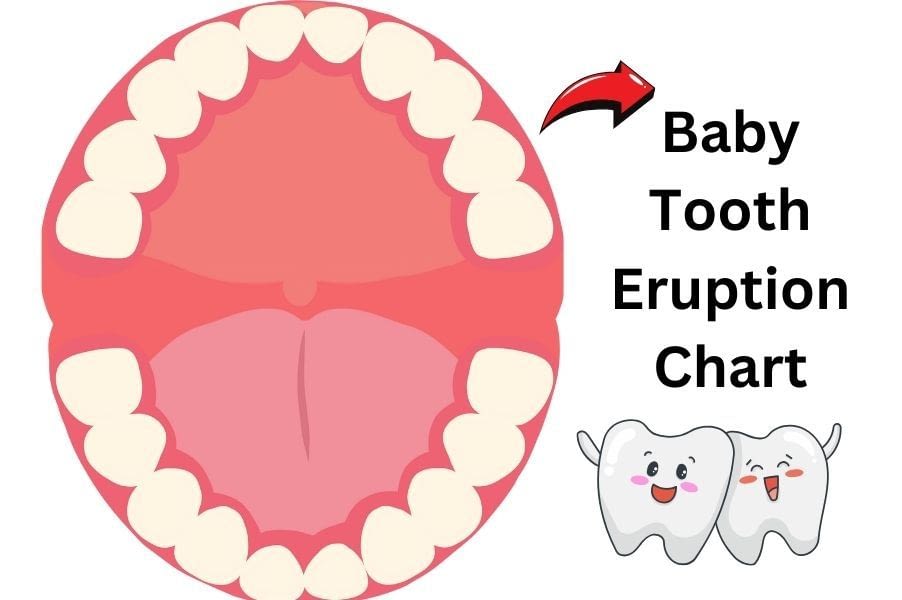As a new parent of a colic baby, you may be overwhelmed by the responsibility and uncertainty of how to get a gassy baby to sleep. One critical question that weighs heavily on parents with colicky babies is, “What’s the best sleeping position for them?”
Getting the correct sleep position can help reduce colic episodes in babies, and having appropriate restful sleep encourages healthy development and growth.
To ensure your infant has a peaceful night and days where they are comfortable, read this blog post to find out the best sleeping position for colic baby.
Read Also: 9 Best Breast Pumps For Working Moms (2023 Reviewed)
Understand Baby’s Colic – What Is It and How Can You Help
Colic causes infants to cry or fuss frequently for a prolonged period, often during the late afternoon or evening. The colic remains is believed to result from environmental and biological factors, including a sensitive temperament, allergies, or immature digestive systems.
Colic typically starts around 2 weeks if the baby is full-term (later in premature babies) and often improves by 3 months.
How to relieve colic in babies
As a parent of a baby who once suffered from colic, I can understand the helplessness and frustration that come along with this condition. One technique that worked for us was adopting a regular feeding schedule, which lessened the bouts of excessive crying.
Yet, this alone wasn’t a complete remedy. We also tried baby yoga, designed explicitly for colicky babies, that involved gentle stretching and movements. These exercises helped our baby to pass gas more efficiently, reducing the discomfort.
A trip to a pediatric chiropractor was another method that proved beneficial for us. The chiropractor used delicate touches and adjustments to alleviate the tension in our baby’s body, positively affecting her colic symptoms.
At night, we put into practice the ‘5S’ approach from Dr. Harvey Karp’s book “The Happiest Baby on the Block.” It involved Swaddling our baby snugly, putting her on her side or stomach, Shushing her with white noise for colicky babies, Swinging her gently, and allowing her to Suck on a pacifier. This method turned out to be a lifesaver during those late-night crying episodes.
However, the most crucial thing we learned was to stay patient and composed, even during those challenging moments.

Why is colic worse at night?
Colic tends to worsen at night because the sensory experiences of the day accumulate and overstimulate babies, leading to distress. Additionally, they may be overtired or experiencing an imbalance in day-night rhythms.
Furthermore, the evening can be a time of increased gas production, exacerbating colic symptoms. A baby with colic may exhibit the following symptoms:
- Intense Crying: The crying sounds loud and persistent and might occur for no apparent reason. It may increase as the day progresses and often occurs in the late afternoon or evening.
- Predictable Timing: Episodes follow a regular pattern, with crying episodes often occurring at similar times each day.
- Physical Discomfort: The baby may show physical discomfort or pain, such as clenched fists, arched back, or curled-up legs.
- Trouble Sleeping: Babies with colic often have trouble falling asleep or staying asleep without interruption
Read Also: Why Can’t You Store Breast Milk In Bottles With Nipples?
While every baby is unique, and what works for one may not work for another, here are some tried and tested methods:
- Soothing Techniques: Rocking, singing, or softly patting your baby’s back can help calm them down.
- Feeding Changes: If you’re bottle-feeding, consider a hypoallergenic formula. If you’re breastfeeding, you should tweak your diet. Consult with your pediatrician for expert advice.
- Sleep Positioning: Proper sleep positioning can make a significant difference. Laying the baby on their back is generally considered the safest and most comfortable position.
New parents must consult their pediatrician before significantly changing their baby’s care. They can offer advice tailored specifically to their baby’s needs and reassure them that colic, while stressful, is a stage that will pass. So, how to get gassy baby to sleep?
Why Find the Best Sleeping Position is Essential for Colic Babies?
Identifying the best sleeping position for a colic baby is of utmost importance. It can significantly alleviate the baby’s discomfort and enhance their sleep quality. A right sleeping position of a baby can help release trapped gas, thus reducing the pressure in the stomach and the pain that comes with it.
Moreover, comfortable and uninterrupted sleep can result in fostering better growth and development. Hence, it’s crucial to experiment with different safe positions to find the best way to soothe your baby’s colic symptoms.
4 Sleeping positions to relieve gas
- Left-Side Laying: Sometimes, placing your baby on its left side can aid digestion, gas passage through the intestines, and heart function, potentially reducing colic symptoms. Place a rolled towel behind your baby’s back to prevent them from rolling over. However, always supervise your baby when they sleep in this position to prevent them from rolling onto their stomach.
- Back Position: The American Academy of Pediatrics recommends this as the safest sleeping position for all infants, including those with colic. It significantly reduces the risk of Sudden Infant Death Syndrome (SIDS).
- Elevated Position: Using a crib wedge to elevate your baby’s upper body slightly can assist digestion and reduce acid reflux, indirectly alleviating colic symptoms. Again, ensuring this is done safely is essential to avoid sliding or rolling risks.
- Lap Pat: The Lap Pat position involves placing your baby face-down on your lap, one hand supporting the head and the other gently patting their back. The gentle pressure on their abdomen can help expel gas, relieving colic symptoms. This method should only be used when your baby is awake, and you can keep close watch.
Furthermore, you should never leave your baby unattended while they sleep in any of these positions. Irrespective of colic, it’s always best practice to be present when the baby is in bed.
Best Sleeping Position for Colic Baby – The “Cradle” Position
From personal experience, the “Cradle” position has been tremendously helpful when dealing with my baby’s colic symptoms.
This position involves holding your baby across your chest or lap so their body is on its side. Their head and back are supported by your arm, mimicking a cradle, and their belly rests against your body.
It feels natural and allows you to gently rock the baby back and forth, often soothing them. In addition, the slight pressure along their belly can help alleviate any discomfort caused by gas or indigestion.
Best feeding position for colic baby
Finding the best feeding position for our colicky baby was also tricky. Initially, I found the most success with the upright position, where I would hold my baby in a sitting position during feeding. This allowed gravity to help keep the milk down, preventing unnecessary air intake.
However, the ‘cradle hold’ worked best for us in the long run. In this position, we held our baby sideways across our lap with their head on our forearm and their body on our belly. Their head was elevated above their belly, which helped to reduce the chances of regurgitation and gas formation.
Always burp your baby after feeding to help release any trapped air, regardless of the feeding position. Though it is the best sleeping position for gassy baby, it’s not recommended for unsupervised sleep due to the risk of SIDS. Always follow safe sleep guidelines and put your baby to sleep on their back in a crib.
Safely Applaud the “Cradle” Position – 8 Tips for Mothers
- Ensure Arm Support: Keep your arm firm and supportive under your baby’s back and head. Their head should be slightly elevated and resting in the crook of your arm.
- Watch Your Baby’s Head: The baby’s head should be turned to the side so that its airways are open and clear.
- Comfortable for Both: The position should be comfortable for you and your baby. If you start to feel numbness or discomfort, gently shift your baby to the other arm or change position.
- Secure the Baby: Place the baby on their belly with your other hand. It provides additional comfort and security.
- Skin-to-Skin Contact: If possible, engage in skin-to-skin contact. This helps to soothe your baby and can be especially comforting to a colic baby.
- Monitor Your Baby: Always watch your baby when they’re in this position. Never leave them unattended.
- Avoid Long Periods: The cradle hold is not meant for long periods of sleep or when you can’t supervise. Always return your baby to their crib for long, unsupervised sleep periods.
- Crib After Soothing: Once your baby is soothed to sleep, gently place them on their back in their crib.
Solutions When the Cradle Pose Doesn’t Work – Alternative sleeping positions to relieve gas
If the cradle position is not helping your baby, there are other positions you may try:
- Football Hold: This position involves holding your baby like a football under your arm, with their head in your hand and the body along your forearm. It can provide pressure on their belly, which may help ease discomfort.
- Shoulder Hold: Holding your baby upright against your shoulder can sometimes be effective. Your baby’s abdomen will press against your shoulder, which may help relieve the gas and colic symptoms.
- Tummy Time: While not a sleeping position, supervised tummy time when your baby is awake, and alert can help alleviate gas and strengthen their neck and shoulder muscles. Place your baby on their stomach on a flat, safe surface and monitor them at all times.
Common Mistakes to Avoid when baby can’t sleep because of gas
When dealing with a colic baby, it’s crucial to avoid certain common mistakes that can exacerbate the condition and compromise your baby’s safety:
- Ignoring Safety Guidelines: Always align with the American Academy of Pediatrics safe sleep guidelines. Avoid placing soft bedding, pillows, or toys in your baby’s crib because these could increase the risk of SIDS.
- Self-Diagnosing Colic: While colic is common, it’s crucial not to self-diagnose it. If your baby is excessively crying, always consult a healthcare professional to rule out other potential medical issues.
- Overfeeding your Baby: Overfeeding can lead to discomfort and increase colic symptoms. It’s essential to understand that frequent crying doesn’t necessarily mean your baby is hungry.
- Neglecting your Own Health: Caring for a colic baby can be exhausting. But neglecting your health and well-being can lead to burnout. Remember to take care of yourself, too.
- Ignoring the Signs of Allergies or Intolerances: If your baby’s colic symptoms are combined with other signs such as diarrhea, rash, or vomiting, they may have a food allergy or intolerance. Don’t ignore these signs and seek medical advice immediately.
- Switching Formulas Frequently: Switching between different formulas too often can cause further upset in your baby’s digestive system. Discuss a formula change with your pediatrician if you think it is necessary.
Old home remedies for colic in babies- How to help a colicky baby
Before we delve into the traditional remedies, always remember to consult your pediatrician before trying new treatments with your baby. Old home colic remedies for breastfed babies can be helpful, but they should never replace professional medical advice.
- Warm Bath: A warm bath can have a soothing effect on an upset stomach. It may help your baby relax and pass gas. Make sure the water temperature is comfortable and not too hot.
- Herbal Tea: Some herbal teas, like chamomile or fennel, are known for their soothing properties and can be given to a colicky baby in small amounts. Always consult your pediatrician before giving your baby herbal teas, and ensure it is cooled before offering it to your baby.
- Gentle Massage: Applying gentle pressure on your baby’s belly and moving your hands clockwise can help release trapped gas, easing discomfort. Always use a soothing touch and avoid applying too much pressure.
- Bicycle Legs: This involves gently moving your baby’s legs in a bicycle motion. This exercise can help push the trapped gas out and relieve colic pain.
- Soothing Sounds: Colicky babies can sometimes be calmed by soothing sounds such as white noise, a lullaby, or a heartbeat. These sounds mimic the noises a baby hears in the womb, providing a sense of security.
- Warm Compress: A warm (not hot) compress applied to the baby’s belly can help relax the muscles and relieve gas pains. Always ensure the compress is not too hot to avoid burns.
- Burping: Ensure your baby burps after every feeding to release any air swallowed during feeding. This can help prevent gas buildup, which can cause colic.
How to burp a colic baby?
Burping is an important step in your baby’s feeding routine. It helps release any air that may have been swallowed during a feed. For colic babies, this can help relieve gas pains and other symptoms associated with colic.
There are several ways to burp a baby:
- The Traditional Burp: Hold your baby against your chest and shoulder while gently patting its back. The upward pressure can help release the gas.
- Sitting-Up Burp: Sit your baby upright in a semi-upright position on your lap. With one hand supporting the chin and chest, use the other to pat or rub the back until a burp occurs gently.
- Face Down: Lay your baby face-down across your lap, with their head slightly elevated. Support their neck and shoulders, then gently pat or rub their back until a burp occurs.
It might take a few tries before you hear that satisfying burp. If, after several attempts, you still need to listen to a burp, don’t worry! Your baby may have already released the gas without making any sound. Hold your baby upright for at least 10 minutes after feeding to give their stomach time for digestion and air release.
Burping can be tricky with colic babies because they often become distressed. If your baby is too upset, take a break and try again later. And always remember to use gentle movements when burping your baby! Remaining calm and providing reassurance can help soothe them while they burp.
Related: Best Bottle Warmer For Comotomo Bottles In 2023
Conclusion – Best sleeping position for gassy baby
Dealing with a colicky baby can be challenging, but remember, you’re not alone, and there are strategies to help. Each baby is unique, so what works for one may not work for another.
It’s all about observation, patience, and trial and error. Always prioritize safety in any sleeping position or method you try. Consult with your pediatrician, who can guide as per your child’s specific needs.
And finally, remember to take care of yourself too. Parenting a colicky baby can be exhausting, so ensure you get the support you need. Your well-being is just as crucial as your baby’s. You and your baby will overcome this challenging phase with time, patience, and care.
Parents Also Ask
What are the worst hours for colic?
The worst hours for colic often occur in the late afternoon or evening, typically starting around 3 p.m. and can last until midnight. This period, often called the “witching hour,” can be stressful for babies and their parents.
What helps colic at night?
To help soothe colic at night, maintain a calm, quiet environment, and follow a consistent bedtime routine. This could include a warm bath, gentle rocking, or humming a lullaby. Use techniques such as the ‘5S’ approach – Swaddling, Side or stomach positioning, Shushing, Swinging, and Sucking.
1 Visit today





